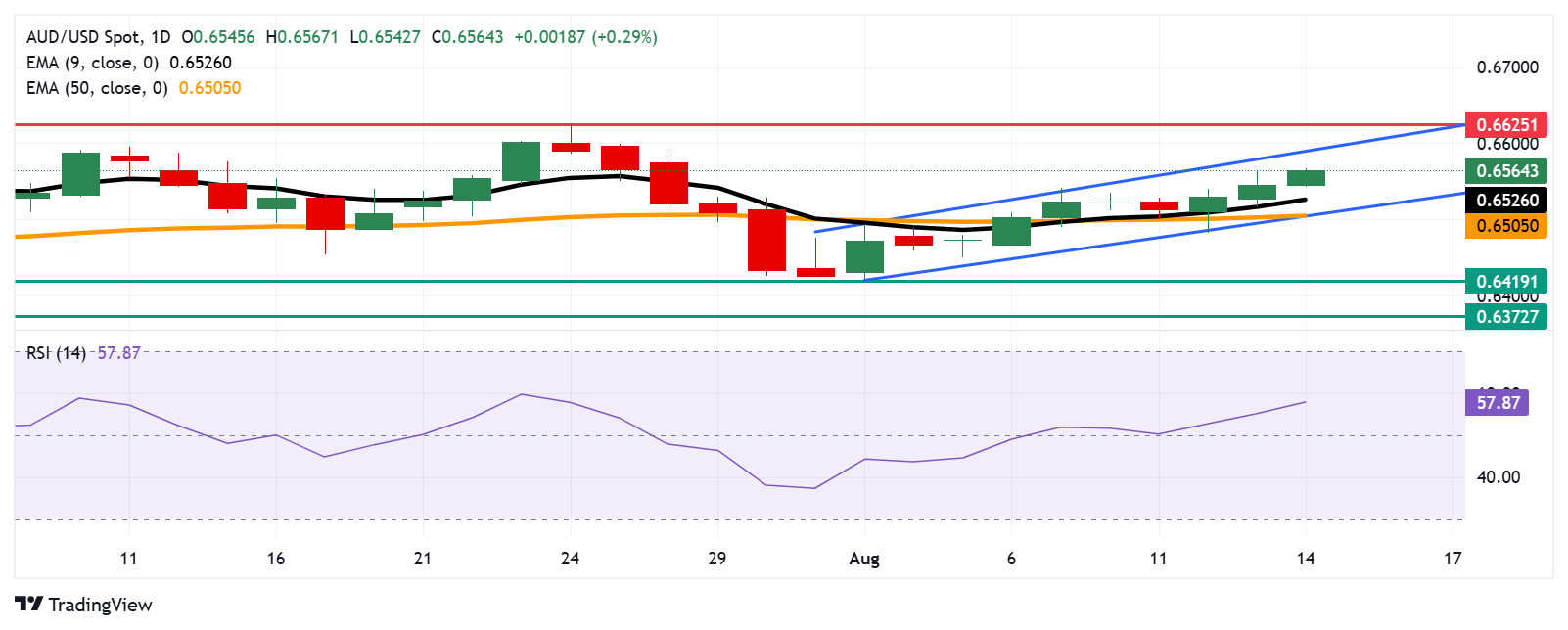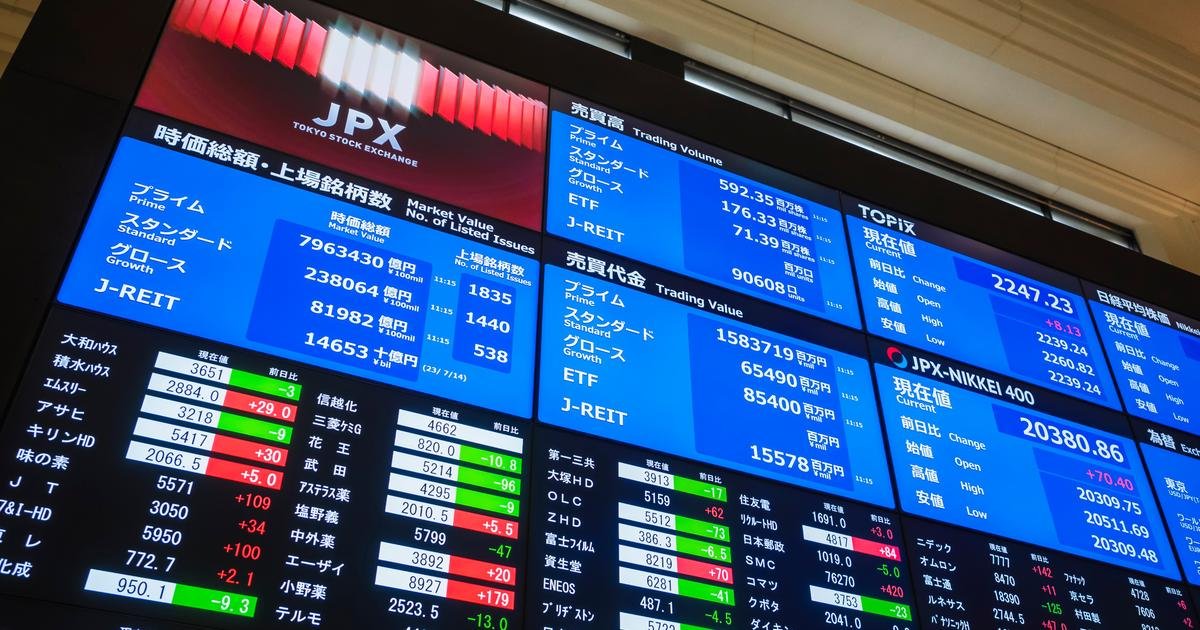- The Australian Dollar strengthened after Employment Change rose to 24.5K in July, up from 1K in June.
- Australia’s Unemployment Rate dropped to 4.2%, as expected, from 4.3% in June.
- US Treasury Secretary Scott Bessent believes that the Fed could implement a 50-basis-point rate cut in September.
The Australian Dollar (AUD) extends its winning streak for the third successive day on Thursday, following the release of domestic labor market data. The AUD/USD pair also gained support as the US Dollar (USD) depreciates amid rising odds of further rate cuts by the US Federal Reserve (Fed).
Australia’s Employment Change arrived at 24.5K in July from 1K in June (revised from 2K), against the consensus forecast of 25K. Meanwhile, the Unemployment Rate fell to 4.2%, as expected, from 4.3% in June.
US Treasury Secretary Scott Bessent said in an interview on Wednesday that short-term Fed interest rates should be 1.5-1.75% lower than the current benchmark rate at an effective 4.33%. Bessent added that there is a good chance that the central bank could opt for a 50 basis point rate cut in September.
Australian Dollar appreciates as US Dollar extends losses on Fed rate cut odds
- The US Dollar Index (DXY), which measures the value of the US Dollar against six major currencies, is losing ground for the third consecutive session and trading around 97.70 at the time of writing. Traders will likely observe the US Producer Price Index (PPI) data, followed by the weekly Initial Jobless Claims due later in the North American session.
- CME’s FedWatch tool indicates that Fed funds futures traders are now pricing in nearly a 94% chance of a 25 basis point (bps) interest rate cut at the September meeting.
- US President Donald Trump shared his “paper calculation” that Fed interest rates should be at or near 1%. Trump also noted interest rates should be three or four points lower. Interest rates are just a paper calculation, he added.
- Chicago Fed President Austan Goolsbee said on Wednesday that economists are unanimous that the Fed must be independent from political interference. Goolsbee added that the central bank’s independence is essential “because we don’t want inflation to come back.”
- White House spokeswoman Karoline Leavitt said on Tuesday that US President Donald Trump is considering legal action against Fed Chair Jerome Powell over his handling of renovations at the central bank’s headquarters, raising concerns about the Fed’s independence, per Reuters.
- US Bureau of Labor Statistics (BLS) reported on Tuesday that the Consumer Price Index (CPI) climbed 2.7% year-over-year in July, matching the 2.7% increase seen in the prior month, and came in below the expected 2.8% increase. Meanwhile, the annual core CPI rose by 3.1% in July, compared to the 2.9% rise seen in June, above the market consensus of 3%.
- The Trump administration postponed the implementation of sweeping tariffs on China for an additional 90 days, just hours before the previous agreement between the world’s two largest economies was set to expire. Furthermore, China also decided to suspend additional tariffs on US goods for the same period, following Trump’s executive order extending the tariff truce. It is essential to note that any changes in the Chinese economy could impact the Australian Dollar, as China and Australia are close trade partners.
- US Treasury Secretary Scott Bessent said on Wednesday that US and Chinese trade officials will meet again within the next two to three months to discuss the future of their economic ties. “The US would need to see sustained progress on curbing fentanyl flows from China, potentially over months or even a year, before considering tariff reductions,” Bessent said.
- The Reserve Bank of Australia (RBA) delivered a 25 basis points (bps) interest rate cut on Tuesday, as widely expected, bringing the Official Cash Rate (OCR) to 3.6% from 3.85% at the August policy meeting.
- RBA Governor Michele Bullock stated that current forecasts suggest the cash rate may need to be reduced to ensure price stability. However, Bullock emphasized the Board’s meeting-by-meeting approach and refrained from making any commitments on rate moves should financial markets experience a bout of volatility.
- Australia’s Wage Price Index rose 0.8% quarter-over-quarter in the second quarter, as expected. The reading came below the previous 0.9% increase. Meanwhile, the annual reading came at a 3.4% increase, above the expected 3.3% rise.
- The RBA’s monetary policy statement noted that inflation has continued to moderate. The outlook remains uncertain. It reaffirmed that maintaining price stability and full employment remains the top priority.
Australian Dollar breaks above 0.6550 as bullish bias strengthens
The AUD/USD pair is trading around 0.6570 on Thursday. Technical analysis on the daily chart suggests a persistent bullish bias as the pair moves upwards within the ascending channel pattern. The pair remains above the nine-day Exponential Moving Average (EMA), signaling that short-term momentum is strengthening. Moreover, the 14-day Relative Strength Index (RSI) has moved above the 50 level, confirming that market bias is bullish.
The AUD/USD pair may target the upper boundary of the ascending channel around 0.6590. A break above the channel could reinforce the bullish bias and support the pair to explore the area around the psychological level of 0.6600, followed by the nine-month high at 0.6625, which was recorded on July 24.
On the downside, the AUD/USD pair could test the nine-day EMA of 0.6526, followed by the 50-day EMA at 0.6505 and the ascending channel’s lower boundary around 0.6500. A successful break below this crucial support zone would dampen the short- and medium-term price momentum and prompt the pair to test the two-month low of 0.6419, recorded on August 1, followed by a three-month low at 0.6372, recorded on June 23.
AUD/USD: Daily Chart

Australian Dollar PRICE Today
The table below shows the percentage change of Australian Dollar (AUD) against listed major currencies today. Australian Dollar was the strongest against the US Dollar.
| USD | EUR | GBP | JPY | CAD | AUD | NZD | CHF | |
|---|---|---|---|---|---|---|---|---|
| USD | -0.05% | -0.12% | -0.64% | -0.09% | -0.33% | -0.20% | -0.05% | |
| EUR | 0.05% | -0.03% | -0.58% | -0.05% | -0.27% | -0.16% | -0.00% | |
| GBP | 0.12% | 0.03% | -0.56% | 0.09% | -0.18% | -0.02% | 0.13% | |
| JPY | 0.64% | 0.58% | 0.56% | 0.55% | 0.30% | 0.32% | 0.54% | |
| CAD | 0.09% | 0.05% | -0.09% | -0.55% | -0.20% | -0.11% | 0.05% | |
| AUD | 0.33% | 0.27% | 0.18% | -0.30% | 0.20% | 0.16% | 0.21% | |
| NZD | 0.20% | 0.16% | 0.02% | -0.32% | 0.11% | -0.16% | 0.11% | |
| CHF | 0.05% | 0.00% | -0.13% | -0.54% | -0.05% | -0.21% | -0.11% |
The heat map shows percentage changes of major currencies against each other. The base currency is picked from the left column, while the quote currency is picked from the top row. For example, if you pick the Australian Dollar from the left column and move along the horizontal line to the US Dollar, the percentage change displayed in the box will represent AUD (base)/USD (quote).
Australian Dollar FAQs
One of the most significant factors for the Australian Dollar (AUD) is the level of interest rates set by the Reserve Bank of Australia (RBA). Because Australia is a resource-rich country another key driver is the price of its biggest export, Iron Ore. The health of the Chinese economy, its largest trading partner, is a factor, as well as inflation in Australia, its growth rate and Trade Balance. Market sentiment – whether investors are taking on more risky assets (risk-on) or seeking safe-havens (risk-off) – is also a factor, with risk-on positive for AUD.
The Reserve Bank of Australia (RBA) influences the Australian Dollar (AUD) by setting the level of interest rates that Australian banks can lend to each other. This influences the level of interest rates in the economy as a whole. The main goal of the RBA is to maintain a stable inflation rate of 2-3% by adjusting interest rates up or down. Relatively high interest rates compared to other major central banks support the AUD, and the opposite for relatively low. The RBA can also use quantitative easing and tightening to influence credit conditions, with the former AUD-negative and the latter AUD-positive.
China is Australia’s largest trading partner so the health of the Chinese economy is a major influence on the value of the Australian Dollar (AUD). When the Chinese economy is doing well it purchases more raw materials, goods and services from Australia, lifting demand for the AUD, and pushing up its value. The opposite is the case when the Chinese economy is not growing as fast as expected. Positive or negative surprises in Chinese growth data, therefore, often have a direct impact on the Australian Dollar and its pairs.
Iron Ore is Australia’s largest export, accounting for $118 billion a year according to data from 2021, with China as its primary destination. The price of Iron Ore, therefore, can be a driver of the Australian Dollar. Generally, if the price of Iron Ore rises, AUD also goes up, as aggregate demand for the currency increases. The opposite is the case if the price of Iron Ore falls. Higher Iron Ore prices also tend to result in a greater likelihood of a positive Trade Balance for Australia, which is also positive of the AUD.
The Trade Balance, which is the difference between what a country earns from its exports versus what it pays for its imports, is another factor that can influence the value of the Australian Dollar. If Australia produces highly sought after exports, then its currency will gain in value purely from the surplus demand created from foreign buyers seeking to purchase its exports versus what it spends to purchase imports. Therefore, a positive net Trade Balance strengthens the AUD, with the opposite effect if the Trade Balance is negative.







